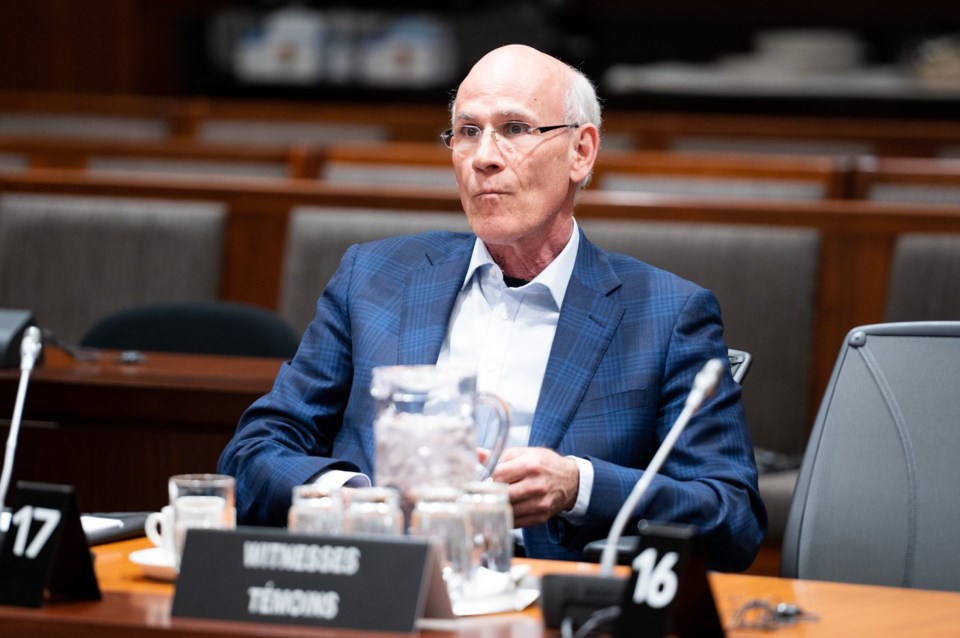OTTAWA ÔÇö Canada's federal public service grew by more than 100,000 people over the past 10 years, and both the Liberals and Conservatives are looking to trim it by not filling jobs when they are left vacant.
But a former Privy Council clerk says that might be the least efficient way to trim the public service and could cause long-term damage to its productivity.
"I think attrition is the worst way to get to a smaller, leaner public service, and that applies to the current Liberal government and to the Conservative platform," said Michael Wernick, who was the country's chief public servant from 2016 to 2019.
He said heÔÇÖd like to see a program and spending review drive any decisions.
"There's no plan there. That's just coasting on retirements and departures," Wernick said. "It's not a mindful way of pruning ÔÇŽ It's not strategic."
As part of its spending review, the Liberal government announced in Budget 2024 a plan to find savings through attrition in the federal public service.
The budget said that, starting April 1, 2025, federal departments and agencies would be required to cover "a portion of increased operating costs" through existing resources and that the size of the public service would decline by roughly 5,000 full-time positions over the next four years.
While cutting the number of permanent public servants wasnÔÇÖt part of the initial plan, federal departments and agencies have since started to announce layoffs and reductions in hiring as they face budget constraints.
In January, Immigration, Refugees and Citizenship Canada announced a plan to cut roughly 3,300 jobs over the next three years, including about 660 permanent employees.
Conservative Leader Pierre Poilievre said this week the public service is bloated and a government led by him would not replace all federal workers when they retire.
"There are roughly 17,000 bureaucrats that voluntarily retire every single year. I'm not going to replace them all," Poilievre said on Feb. 3. "And through that powerful mathematics of attrition, we will reduce the morbidly obese back-office bureaucracy."
Poilievre said the money saved would be put toward border security, including "frontline boots on the ground, drones, helicopters and other surveillance in the sky."
The government reports there were 367,772 public servants in 2024, up from 257,034 in 2015.
While the increase over the past few years can be attributed in part to pandemic-era hiring, it could also be explained by Canada's population rising by over five million since Prime Minister Justin Trudeau took office.
The Treasury Board of Canada Secretariat says there were 8,041 retirements and 2,215 resignations from the federal public service in 2023-24. Another 2,551 public servants left for "other" or "unspecified" reasons.
Politics professor Lori Turnbull, a senior adviser at the Institute on Governance at Dalhousie University, agrees with Wernick that attrition may not be the fastest way to rein in spending because many of the people Ottawa has hired recently are nowhere close to retirement.
ÔÇťA lot of the people who have come in are not old,ÔÇŁ Turnbull said, adding that attrition isnÔÇÖt a deliberate strategy to reform the public service.
Federal statistics show the average age of federal public servants in 2023 was 43 and the average age of those in executive roles was 50.
Fen Osler Hampson, a professor of international affairs at Carleton University, said he agrees the federal public service is too large and may be unsustainable.
"The size of the public service has grown much faster than the growth of the economy and if we're going to hit a recession because of (U.S. President) Donald Trump, you're going to have to shrink the size of the public service because it's already a drag on the economy when it is at or near full employment," Hampson said.
But he said attrition won't be enough to make substantial savings in public service costs.
"You're gonna have to have buyouts and you're gonna probably have to have (an) across the board program review to figure out what you want to keep and what you want to get rid of," said Hampson.
This report by The Canadian Press was first published Feb. 5, 2025.
Catherine Morrison, The Canadian Press



